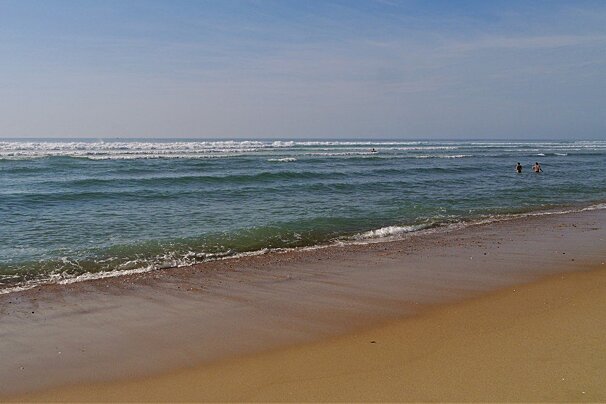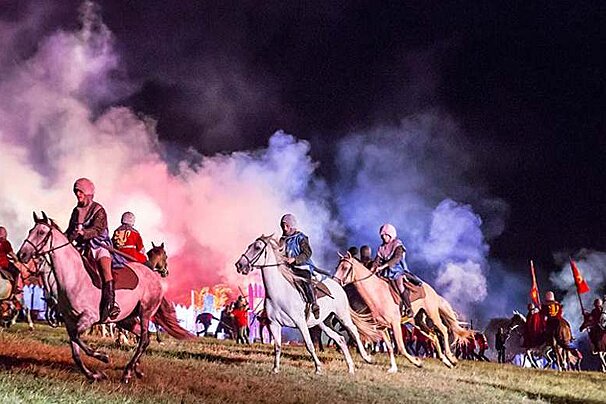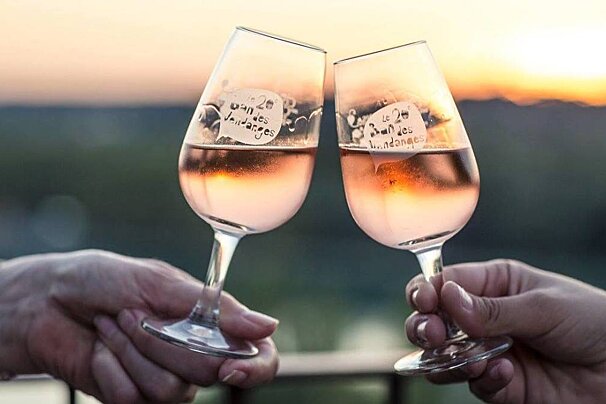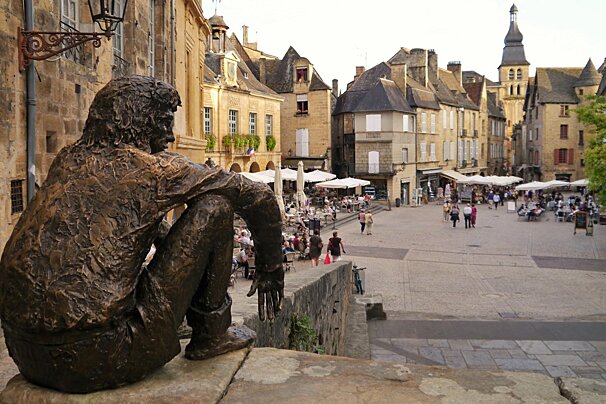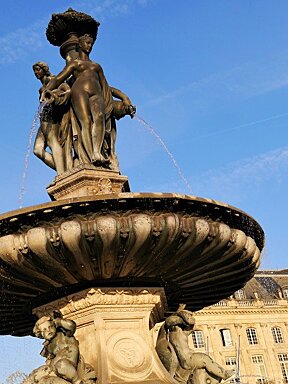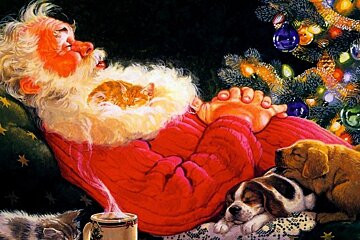
© w-dog
I'm dreaming of a French Christmas in Bordeaux
All you need to know about celebrating Christmas in France
If you are spending this Christmas season in France then there are a few quirky traditions that you should be aware of. If you decide to embrace them all then you could be in for a very festive time indeed!
First things first: if you are from the UK, America or Australia then you will no doubt be used to celebrating Christmas on the 25th December. A day for the family to get together, eat turkey and fall asleep in front of the TV (or for the southern hemisphere, have a BBQ and enjoy a surf!). But the European traditions are a little different and many countries celebrate with family and present giving on Christmas Eve. In France, however, you will find that depending on the region, gifts are exchanged as early as 6th December at the feast of St Nicolas, or even as late at 6th January. That's a choice of four dates for your celebrations... take your pick.

Christmas markets
Although originating in Germany, the Christmas Market or Marché de Noël has become a popular tradition all across France with each city, town and village hosted their own version during the four weeks of Advent in December. Sticking to German traditions, many will house local craftspeople in small wooden chalets with at least one stall serving up mulled wine (Vin Chaud). As well as a good selection of sausages, cheese, candy, pastries and other local produce and delicacies, the Christmas markets are the perfect place to pick up those last minute gifts and stocking fillers for loved ones. Check out our events calendar for a market in Bordeaux.

Nativity scenes and santons
The French have taken the traditional nativity scene to a whole new level. As well as the usual suspects, such as the baby Jesus, Mary, Joseph and the three kings, the French have added other characters known as 'santons' to their crèche. These small figurines are an art of their own with the expertise for making them being passed down through the generations. In some towns and villages, especially in Provence and the south of France, you will find whole exhibitions and markets dedicated to these santons and the landscapes that surround them.

Midnight mass
Traditions continue to run strong here in France and, to truly experience Christmas, you should consider attending a midnight mass. Although it is officially a secular country, its Catholic past is particularly obvious on Christmas Eve when cathedrals are bursting at the seems with carols and hymns. Check out our events calendar to find local choir and carol concerts over the festive season.

Christmas Eve meal
Once you've sung your heart out at midnight mass, it is time to return to the family home (chalet, apartment or hotel) and the 'Gros Souper' (grand supper), the traditional Christmas Eve dinner. We say Christmas Eve but to be honest, once you've finished midnight mass, had some sweets and prepared the dinner, then it is really is verging on Christmas morning! On the table and eaten with the meal are 13 loaves of bread that symbolise the Last Supper. One large loaf represents Jesus, and the 12 smaller loaves represent the 12 apostles. Also known as Le Reveillon (or 'wake-up' meal), the big Christmas meal in French families will often start with an entree of oysters, foie gras, caviar or escargot. Goose and turkey are popular main courses with chestnut stuffing, and some kind of cranberry sauce will no doubt be involved.
If you would rather wait until the daylight hours before taking on your feast (and let someone else do the washing up) then check out which restaurants are open near you and book your Christmas dinner.

The 13 desserts
Now, this is one Christmas tradition that we absolutely uphold! Continuing the traditions of eating and the number 13 the 'Gros Souper' concludes with 13 desserts. Each one has some sort of special meaning and many of the recipes date back to Roman times. Candied fruit plays an important roll in the thirteen desserts, with walnuts, dried figs, almonds and raisins being ever present. From Provence, the Calissons d'Aix is a delicious sweet treat that reminiscent of the marzipan and royal icing topping that covers the traditional British Christmas cake.

The Yule Log
Nowadays, many Christmas feasts will possibly end with the family tucking into a chocolate yule log. This tradition, dating back to medieval times, is particularly celebrated in the southern areas of France where families burn a log in their homes from Christmas Eve until New Year's day, supposedly bringing good luck for the coming harvest. Oh, and the log is sprinkled with wine before it is burnt so that it smells nice when it is lit! Now the yule log, or Bûche de Noël, has become something of a traditional dessert served near Christmas, especially in Belgium, France, Quebec and other former French colonies. Made of chocolate sponge cake to resemble a miniature actual Yule log, it is a form of sweet roulade.

The Galette des Rois
To finish off the festive season, which by this time has involved a lot of eating and drinking, the French continue this theme into January with the feast of Epiphany and one final special pastry - the galette des rois. Inside the cake is a hidden charm known as a fève; whoever finds it in their portion is crowned the king or queen for the day. Tradition normally reserves this role for the youngest member of the family but if you have a competitive streak then it's game on!








